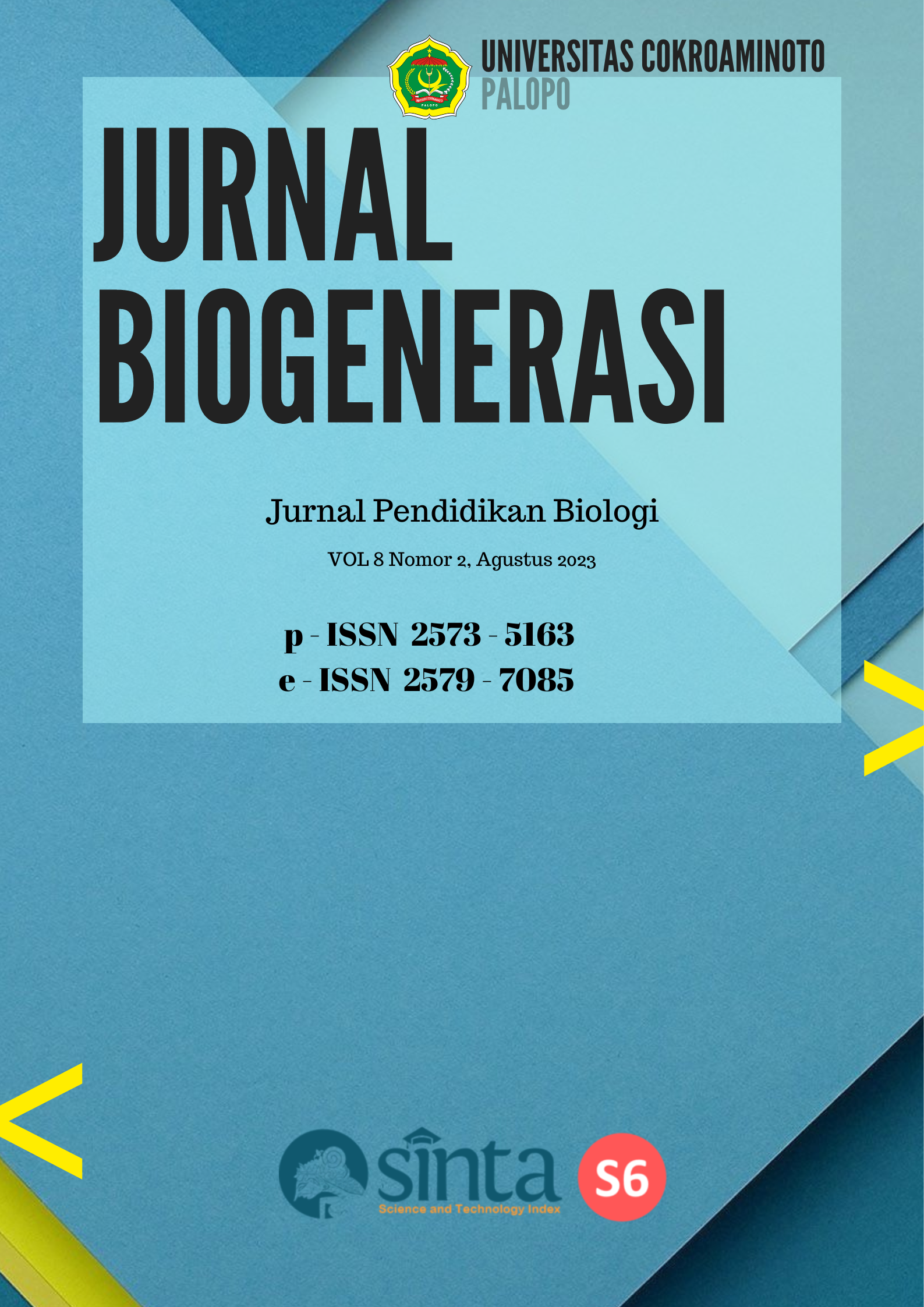STRATEGI PENGEMBANGAN USAHATANI NILAM DI KECAMATAN NUHA KABUPATEN LUWU TIMUR
DOI:
https://doi.org/10.30605/biogenerasi.v8i2.3959Keywords:
Development Strategy, Patchouli, SWOTAbstract
This Research aim was to determine the development strategy of patchouli farming system in Nuha Sub-district. The site of this research was purposively selected with consideration that Nuha sub-district is one of the sub-districts existing in Luwu Timur regency that develops patchouli. Twenty eight respondent samples, 15% of population of patchouli farmers, were selected through simple random sampling method in tree villages. Data were analyzed using SWOT. The SWOT analysis revealed that the farming system was in quadrant I position (support the aggressive strategy) with SO strategy (strengths-opportunities). Program proposed to support the strategy are (1) optimizing land resources in efforts to increase production, 2) utilizing the role of farmer groups in order to develop marketing strategies, 3) empowering the farmers to be better in thinking and acting for any activity implementation, to generate profit in order to increase the productivity and to ensure the production continuity of the farming system, and 4) developing superior local seedlings through government support.
Downloads
References
Hussin, N., Mondello, L., Costa, R., Dugo, P., Yusoff, N. I. N., Yarmo, M. A., … Said, M. (2012). Quantitative and Physical Evaluation of Patchouli Essential Oils Obtained from Different Sources of Pogostemon cablin. Natural Product Communications,7(7),1934578X1200700.https://doi.org/10.1177/1934578X1200700732
Purbaningtias, T. E., Wiyantoko, B., Kurniawati, P., & Sari, M. K. (2014). Decreasing in Acid Number of Patchouli Oil by Different Natural Adsorbent and Variation of Contact Time. Jurnal Eksakta, 14(1), 27–33. https://doi.org/10.20885/eksakta.vol14.iss1.art3
Rahmayanti, D., Hadiguna, R. A., Santosa, S., & Nazir, N. (2018). Determining The Profit Margin In “Patchouli Oil” Supply Chain: A Case Study In Indonesia. International Journal on Advanced Science, Engineering and Information Technology, 8(2), 483. https://doi.org/10.18517/ijaseit.8.2.3485
Rangkuti, 2006. Analisis SWOT: Teknik Membaca Kasus Bisnis. PTGramedia Pustaka Utama, Jakarta.
Santoso, 1990. Bertanam Nilam Bahan Industri Wewangian, Kanisius, Yogyakarta
Sudaryanto dan Syafaat, N. 2002. Kebijaksanaan Pembangunan Pertanian Wilayah dalam Analisis Kebijakan: Paradigma Pembangunan dan Kebijaksanaan Pengembangan Agro Industri. Monogroph Series No.22.
Taherdoost, H. (2016). Sampling Methods in Research Methodology; How to Choose a Sampling Technique for Research. SSRN Electronic Journal. https://doi.org/10.2139/ssrn.3205035
Van Beek, T. A., & Joulain, D. (2018). The essential oil of patchouli, Pogostemon cablin: A review. Flavour and Fragrance Journal, 33(1), 6–51. https://doi.org/10.1002/ffj.3418
Yahya, A., & Yunus, R. M. (2013). Influence of Sample Preparation and Extraction Time on Chemical Composition of Steam Distillation Derived Patchouli Oil. Procedia Engineering,53, 1–6. https://doi.org/10.1016/j.proeng.2013.02.001
Downloads
Published
How to Cite
Issue
Section
License
In submitting the manuscript to the journal, the authors certify that:
- They are authorized by their co-authors to enter into these arrangements.
- The work described has not been formally published before, except in the form of an abstract or as part of a published lecture, review, thesis, or overlay journal.
- That it is not under consideration for publication elsewhere,
- That its publication has been approved by all the author(s) and by the responsible authorities – tacitly or explicitly – of the institutes where the work has been carried out.
- They secure the right to reproduce any material that has already been published or copyrighted elsewhere.
- They agree to the following license and copyright agreement.
License and Copyright Agreement
Authors who publish with this journal agree to the following terms:
- Authors retain copyright and grant the journal right of first publication with the work simultaneously licensed under Creative Commons Attribution License (CC BY 4.0) that allows others to share the work with an acknowledgment of the work's authorship and initial publication in this journal.
- Authors are able to enter into separate, additional contractual arrangements for the non-exclusive distribution of the journal's published version of the work (e.g., post it to an institutional repository or publish it in a book), with an acknowledgment of its initial publication in this journal.
- Authors are permitted and encouraged to post their work online (e.g., in institutional repositories or on their website) prior to and during the submission process, as it can lead to productive exchanges, as well as earlier and greater citation of published work.



.png)

